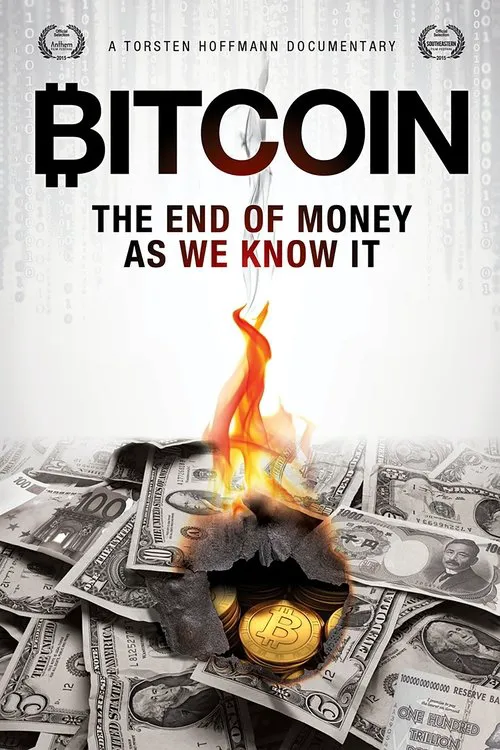Bitcoin: The End of Money as We Know It

Plot
Bitcoin: The End of Money as We Know It delves into the concept of how value is traded in society, from bartering and commodities to the advent of digital currencies. It examines the transformation that occurred when Bitcoin emerged on the scene, sparking a global conversation about the future of money. The documentary begins by exploring the history of currency and how it evolved from the early days of bartering. It examines the various forms of currency that have existed, including gold, silver, and paper money, and how these forms of currency were used throughout history. The film highlights the significance of coins, and how different countries employed unique designs, symbols, and methods to mint their currency, creating a fascinating tapestry of cultural expression. As the documentary progresses, it delves into the world of modern-day monetary systems. It explores how governments and Central Banks control the creation and distribution of money, and how this power can be both a benefit and a hindrance to economies. The film highlights the concept of fractional reserve banking, which allows banks to create new money by lending out deposits, rather than actual physical cash. This practice has been criticized for being inflationary and allowing banks to create new money out of thin air. The documentary then shifts its focus to the emergence of digital currencies, such as Bitcoin. It examines how Satoshi Nakamoto, the pseudonymous creator of Bitcoin, introduced a decentralized and digital currency that operates independently of governments and Central Banks. The film delves into the blockchain technology that underlies Bitcoin, which allows for secure, transparent, and tamper-proof transactions. The documentary highlights the key features of Bitcoin, including its scarcity, speed, and security. It examines how Bitcoin allows users to make peer-to-peer transactions without the need for intermediaries, such as banks and payment processors. The film also explores the concept of mining, which is the process of validating transactions and adding them to the blockchain through the use of complex mathematical calculations. Bitcoin: The End of Money as We Know It also explores the potential uses and implications of Bitcoin. It examines how Bitcoin can be used as a hedge against inflation, as well as a means of making transactions across borders. The film highlights the potential for Bitcoin to facilitate global economic development and provide financial inclusion for underserved communities. However, the documentary also acknowledges the controversies surrounding Bitcoin. It examines the debates about the legitimacy and regulation of Bitcoin, as well as the concerns about its volatility and potential for use in illicit activities. The film highlights the risks associated with investing in Bitcoin, as well as the concerns about its environmental impact. Throughout the documentary, interviews with experts, including economists, technologists, and entrepreneurs, provide insight into the world of digital currencies. The film features discussions about the potential for Bitcoin to disrupt traditional monetary systems, as well as the potential for new forms of currency to emerge. The filmmakers also examine the psychological and social aspects of money, including the ways in which money is perceived, valued, and used in society. Ultimately, Bitcoin: The End of Money as We Know It presents a comprehensive and nuanced exploration of the world of Bitcoin and digital currencies. By examining the history, technology, and implications of Bitcoin, the documentary provides a thought-provoking look at the future of money and the possibilities it holds.
Reviews
Recommendations



